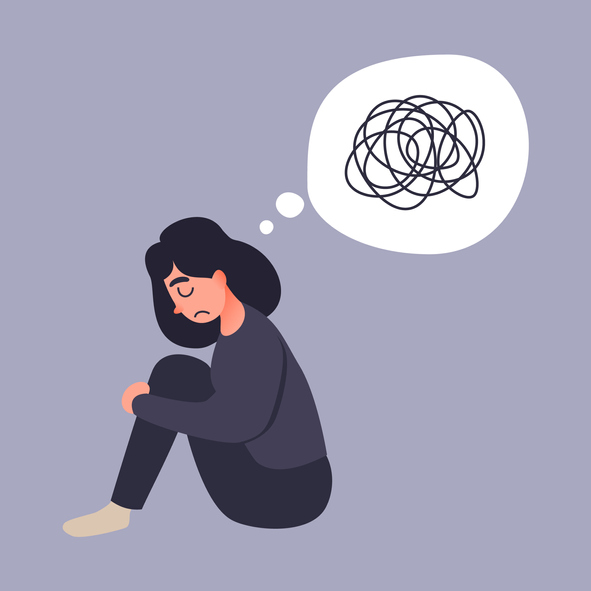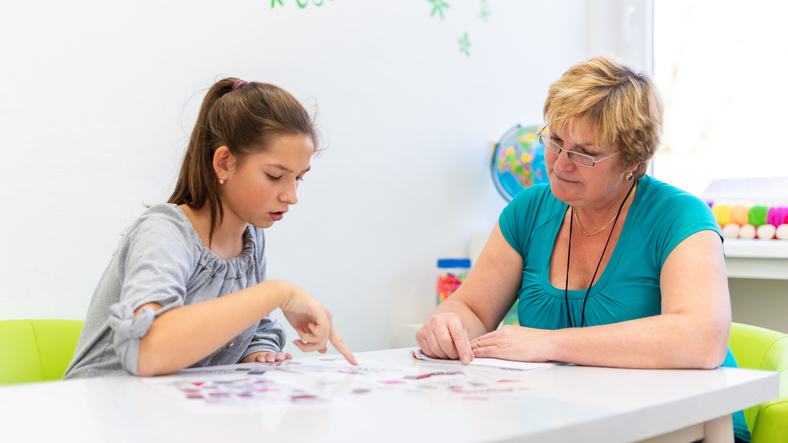The Truth about ADHD in Girls, and 5 Ways You Can Help
 Raquel is a bright, creative girl who likes singing, dancing around the house and riding her bike. She is an eighth grade girl with ADHD and mild dyslexia and receives support services at school through her IEP. She can be articulate, warm and funny. Raquel also has also developed a nice group of friends over the past year. Shana can be easily distracted and inflexible about routines. Her room is very disorganized and meals are difficult since she’s particular about her food and doesn’t like to hear other people chew. Bedtime and morning routines often deteriorate into yelling matches if she’s not getting what she wants immediately. In addition, she procrastinates about cleaning her room for months at a time. Life at home with her parents and two older siblings is marked by tension, arguments and disappointment, which nobody likes. For parents of girls with ADHD, can you relate?
Raquel is a bright, creative girl who likes singing, dancing around the house and riding her bike. She is an eighth grade girl with ADHD and mild dyslexia and receives support services at school through her IEP. She can be articulate, warm and funny. Raquel also has also developed a nice group of friends over the past year. Shana can be easily distracted and inflexible about routines. Her room is very disorganized and meals are difficult since she’s particular about her food and doesn’t like to hear other people chew. Bedtime and morning routines often deteriorate into yelling matches if she’s not getting what she wants immediately. In addition, she procrastinates about cleaning her room for months at a time. Life at home with her parents and two older siblings is marked by tension, arguments and disappointment, which nobody likes. For parents of girls with ADHD, can you relate?
Symptoms of ADHD in girls
Although the basic diagnostic criteria for ADHD are the same for all genders, ADHD often looks different for females than it does for males. While you may see signs of physical and verbal impulsivity and hyperactivity in your daughter, you are just as likely to see silliness or spaciness, shyness, daydreaming, perfectionism, anxiety, forgetfulness, emotional dysregulation, trouble making and keeping friends and picking at themselves.

These signs can be overlooked in favor of boys who demonstrate more externalizing symptoms of ADHD and draw more attention from the teacher in class. For every girl who is diagnosed with ADHD, there are three boys with the condition.
How the presentation of ADHD in girls impacts a diagnosis
Girls with ADHD are diagnosed on average up to five years later than boys. Boys are diagnosed more often with hyperactivity/impulsivity, usually exhibiting inappropriate, aggressive or impulsive behaviors. Girls tend to have the inattentive type of ADHD, with more internal traits. This explains why we miss diagnosing ADHD in girls so much of the time. Both boys and girls with ADHD have brains that mature more slowly than neurotypical kids, with a lag of to three years. Higher rates of anxiety and depression often accompany ADHD in girls or may well overshadow or mask it altogether.
Unique challenges for girls with ADHD
While girls with ADHD can pay attention and focus well on things that interest or come easily to them, it’s their difficulties with uninteresting, unpleasant tasks where their ADHD brains struggle. Some deficits may be more obvious than others. Kendra gets to school on time but can’t keep your bedroom organized or meet deadlines for assignment. Zara gets her work done but is distracted so easily that it takes her twice as long as it should.
To make things more difficult, many girls with ADHD or LD will deny their executive functioning challenges and academic issues due to embarrassment or low self-worth.

Ashamed of their difficulties and overwhelmed by frustration or fear about possible negative outcomes, some girls with ADHD will do anything to avoid disappointing friends and family, including themselves. Their challenges with verbal expression, auditory processing or verbal control make it harder for them socially. Girls are often conditioned to believe that they define themselves through their relationships. So when girls with ADHD misread cues or don’t hear what someone is saying because they are distracted or struggle to express themselves, they have a much harder time relating to their peers with the expected verbal connections.
Many girls will suffer silently rather than appear different from friends. Teachers and parents may miss seeing the ADHD that really exists as girls try to fly under the radar. Addressing this shame is a key feature of any therapeutic work for girls with ADHD. Of course, everybody with ADHD has serious executive functioning challenges, but all neurodivergent people have personal strengths.
Here are some ways that you can support girls with ADHD in your life:
1. Manage your own reactivity:
 When you are triggered by your daughter, it’s really difficult to show up as the parent you want to be. Figure out the internal signals that you are being set off and create a plan to calm yourself down.
When you are triggered by your daughter, it’s really difficult to show up as the parent you want to be. Figure out the internal signals that you are being set off and create a plan to calm yourself down.
Take a timed break from each other, go to the bathroom or step outside. Your emotional response will simply activate her even further.
In a calm moment, discuss what’s okay to say and do when she’s upset and what isn’t. Ask her to think of a logical consequence for cursing you out or a way that she can make amends for leaving a sink full of dirty dishes.
2. Set up weekly meetings:
To avoid nagging and arguments, sit down together once or twice a week. Assist them to organize their daily and weekly schedules and set up doable routines. Work with their desire for mastery and independence. Offer girls choices and incorporate their ideas for any programs you create. This will increase their buy-in.
3. Determine their executive functioning age:
Kids develop in uneven ways. They are stronger in some areas than others and this patterned development is especially true for both boys and girls with ADHD. If your daughter is 12, she may act 12 in her self-care (hygiene and ability to take care of the cat). But she may be more like a nine year-old in her organizational, planning and focus skills. Talk with her about her strengths and challenges and pick one skill to improve.
4. Make a study plan:
 Figure out together where, when and how homework or hybrid school will occur.
Figure out together where, when and how homework or hybrid school will occur.
If your daughter gets easily overwhelmed or distracted, help her (or ask the school to) break assignments down into smaller, manageable parts.
Teach her about time: what it feels like and how to work within its limits. This doesn’t come naturally to many kids with ADHD.
5. Offer empathy for their struggles:
Overcoming shame and learning how to advocate for herself are the best things you can teach your daughter to do. Perhaps you’ve had to learn these skills, too. What negative things does she say to herself? How can the two of you reframe these criticisms into something more positive? What tools does she need to talk honestly and non-judgmentally about her executive functioning challenges so she can get the accommodations and support she needs?
Recall times she’s faced her fears or her embarrassment before, and write down these moments of resilience. Hang it up in her room so she can look at the list. It’s too easy to forget the wins!
Read more blog posts:
- Moms with ADHD: Nurturing your power of authenticity
- Recognizing ADHD in Boys and 4 Ways to Help Them Succeed
- Gender, Sexuality and ADHD: Parenting Children and Youth with ADHD Exploring Their Gender and Sexual Identity
Watch on Dr. Saline’s YouTube Channel:
- How Do I Support My Daughter with ADHD? (ADHD Q&A with Dr. Sharon Saline)
- Moms with ADHD: Why YOU Are the Best Mother for Your Child (ADHD Q&A with Dr. Sharon Saline)
- How to Deal with & Educate ADHD Doubters (ADHD Q&A with Dr. Sharon Saline)
https://drsharonsaline.com/product/home-seminar/
